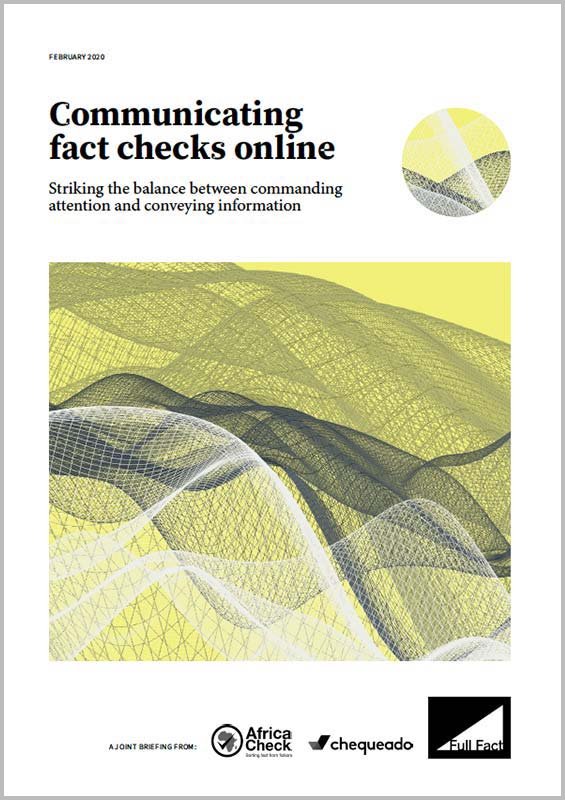Is a picture worth a thousand words? How to strike the balance between commanding attention and conveying information online
Remember those board games people sometimes wheel out at parties, where you compete to see who can identify the most logos in a given set?
You suddenly find yourself recalling dozens of car manufacturers, even when you don’t drive, and recalling fast food chains, even when you prefer to cook your own food. That is because we tend to notice and remember images.
By contrast, ask yourself when you last read about those brands, or better yet what these articles said, and you will likely find this much harder to remember. This briefing looks at why formats influence the effectiveness of communication, and what fact checkers can do to optimise publishing online.
Join 72,953 people who trust us to check the facts
Sign up to get weekly updates on politics, immigration, health and more.
Subscribe to weekly email newsletters from Full Fact for updates on politics, immigration, health and more. Our fact checks are free to read but not to produce, so you will also get occasional emails about fundraising and other ways you can help. You can unsubscribe at any time. For more information about how we use your data see our Privacy Policy.
Three reasons why format matters
Reach. On the simplest level, presentation matters because it affects who we reach. More than two thirds of adults in Argentina and South Africa, and almost half of adults in the UK, turn to social media for news.
Stories that get seen on social media are often those that make smart use of visuals. Posts with pictures are significantly more likely to be shared than those with just headlines, and play a bigger part in audiences’ desire to read an article than the the news outlet cited, or the social connection who shared it.
Credibility. Visual data is also more believable. Several experiments found that a general statement, such as “macadamia nuts are in the same family as peaches”, is believed more when it is accompanied by a picture of the nuts, than when it occurs on its own.
Beyond the element of attention grabbing and “truthiness” however, formats also matter because they affect what audiences learn. This is where things get complicated.
Learning. Visual elements which stimulate engagement are not always best placed to convey information. Sometimes, this works. An image which mirrors the conclusions of an article can help readers recall it, by stimulating different parts of the brain and giving them a “double dose” of the same information.
In other cases however, visual and audiovisual detail can also fatigue and distract. An experiment which showed readers different versions of a fact check, found that the effectiveness of the correction was influenced by the extent to which it mirrored, or diverged from the overall tone of the article.
Clear, jargon-free text is still the best at conveying information
A study by the BBC which asked audiences what they want from digital content, and research by educational psychologists, find that it is hard to beat well-written copy.
Write clear, jargon-free articles, which provide a full explanation of why a claim is wrong. Remember that people find it easier to read short paragraphs displayed in single columns, and that unnecessary graphics can distract.
As far as images go, there is plenty of evidence to suggest that our gaze is drawn towards faces, bright colours, and emotion. But we are far from finding an image formula for everything. Most notably, it is important to remember that publishing online is a matter of striking a balance. Commanding attention is only half of the story. Fighting misinformation in the long term is about learning.
We'd love you to read the briefing
And share your feedback. Every response will help us nuance our recommendations, and bring research closer in line with fact checkers’ needs. Email us at research@fullfact.org.
